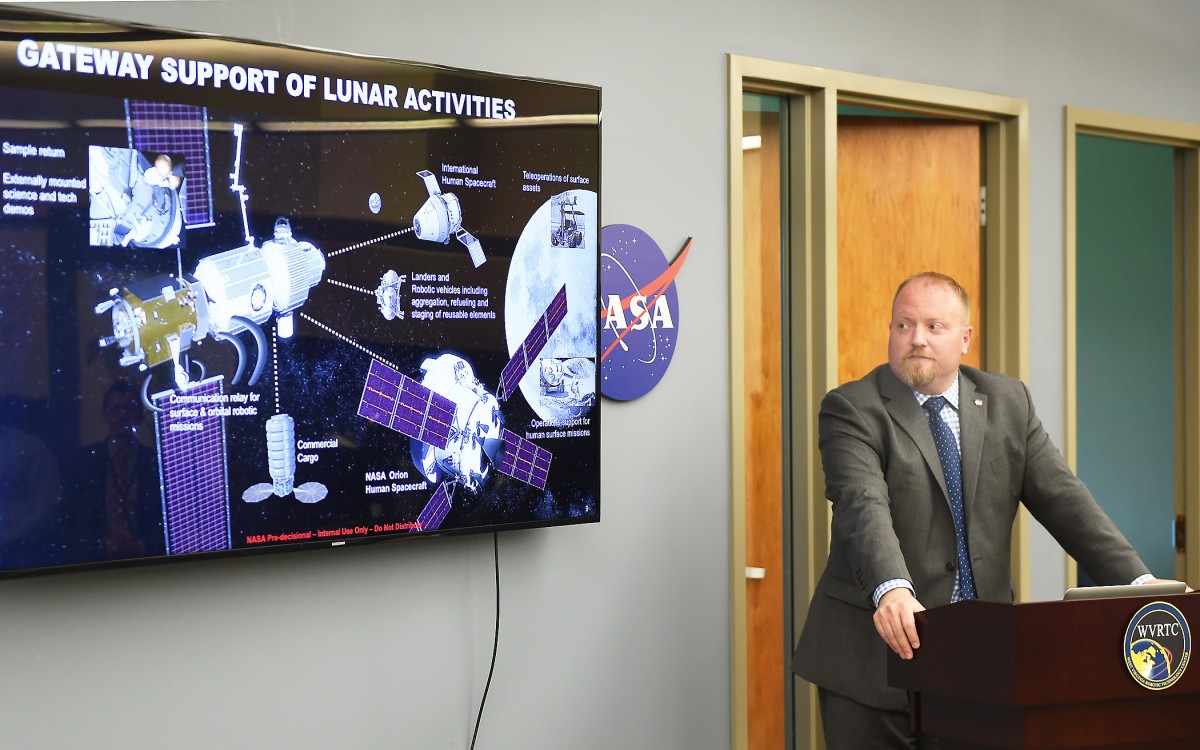MORGANTOWN — NASA is planning for another moon landing.
West Virginia’s Robotic Technology Center hosted the director of the Advanced Exploration Systems (AES), Jason Crusan Wednesday.
Crusan is also NASA’s senior executive, advisor and an advocate on technology.
Crusan’s presentation revealed the advancements in technology currently being worked on at NASA, in addition to the partnerships being created and how they are developing technology that will aid a future moon landing.
“We’re working towards a human landing towards the moon. We don’t have a specific date on it because what we want to do is advance commercial capabilities at the same time of doing that, so that it’s not just a stunt,” Crusan said. “We want to build an inherit ability to go to the moon, utilize the resources on the moon for all kinds of exploration and commercial use — so the pace of actually a human landing is going to be driven by both NASA’s desires and requirements but also how fast can the industry do it as well.”
Crusan added that the projected time is not set, but is hopeful that it can be accomplished in the next 10 years.
“It will likely be by the end of the decade, but it depends on how that development goes and how the market emerges as well,” Crusan said.
Thomas Evans, director of West Virginia Robotic Technology Center (WVRTC), said the main focus through WCRTC’s program is to provide and develop research to later pass on for NASA to use.
“WVRTC’s initiative is to apply the great research and the research of the scientists here at the center to NASA missions or practical applications,” Evans said. “We have a lot of talented individuals here that have worked for NASA and their particular robotics and satellite service emissions, so now it’s actually taking that work, developing it and applying it.”
In addition to Evans being the director of WVRTC, he is also a professor at WVU, and from his standpoint, he finds that the program is stimulating to the youth at WVU that are involved in WVRTC, as well as becoming “great” engineers in the process.
“It’s inspiring — you see a lot of the students that come through, they’re young in their careers, they’re young in their confident stages,” Evans said, “but as they go through these programs with student competition, being involved with the engineers here in RTC, you really see them grow and gain in their knowledge and experience so they can go off and be great engineers in the field and hopefully stay in West Virginia and work the jobs here.”
According to Evans, there are advancements occurring on WVU campus for robotic technology with the students, as well as faculty that are working on projects that will be delivered to NASA in future years.
“A lot of the faculty and students that are on campus that have relevance to the areas we work for NASA missions are also WVRTC members, so we meet with them weekly on campus to talk about the progress of their research projects, we foster that and see if we can actually develop it to a point where they can hand it off to us and we can develop it, mature it and deliver it to NASA,” Evans said.
“I think it’s a great position to put our university in and the state of West Virginia because technology, machine learning, artificial intelligence — those are all robotic systems and robotics applications that are highly dependent upon what we do here in West Virginia,” Evans said, “so we can expand and grow our capability in the economic sector and grow jobs by being in that area.”




